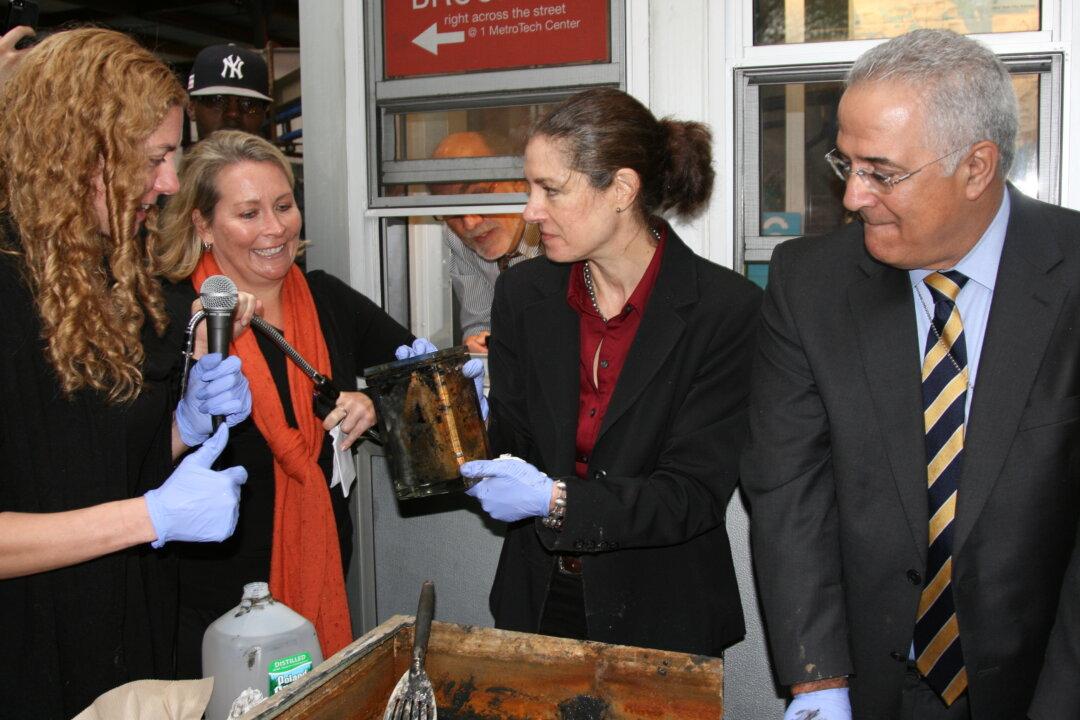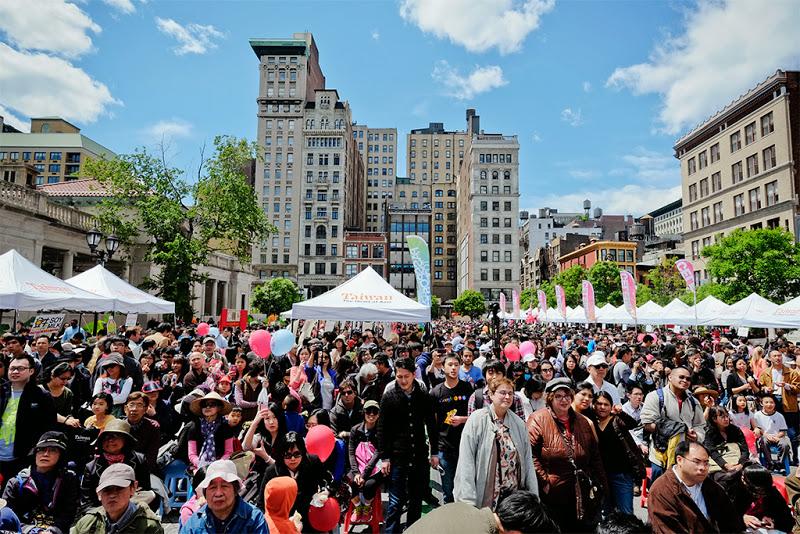NEW YORK—Workers dug up a time capsule, buried in Brooklyn since 1950 and said to contain subway plans, only to find water and mud had gotten there before them.
As the Jay Street building, now acquired by NYU, changes hands, renovators thought it was the perfect time to unearth the crypt, where transportation officials from a century ago had tucked in microfilm with the construction drawings of the building.
The capsule had been lying dormant underneath the engraving “1950” on the ground outside 370 Jay St. for 64 years.
“These were subway guys who put it in. I don’t know why they didn’t realize that anything you put underground is going to get water in it,” said New York Transit Museum Director Gabrielle Shubert wryly at Wednesday’s capsule unveiling.
The capsule had contained newspapers from 1950, a glass canister with the microfilm, and the only thing left fully intact—a nickel from a fair that year.
Conservator Toya Dubin from Hudson Microimaging attempted to salvage the canister, wiping it clean of mud using distilled water and paper towels. But she determined that the insides were beyond repair and could only serve as an artifact at the transit museum now.
New York City Transit President, Carmen Bianco, said the yellow and black liquids amassed inside the capsule didn’t discourage him.
“It’s just fascinating to be here—it’s not something I get to do in my normal duty,” said Bianco, “because I’m always thinking back to folks who had jobs like I do, you know, what were they thinking, when you go back 60 years? How different do we think compared to them?”
Many who oversaw the cleanup of the slimy contents quipped that learning from this experience, if they made another time capsule, it would be waterproof next time.





